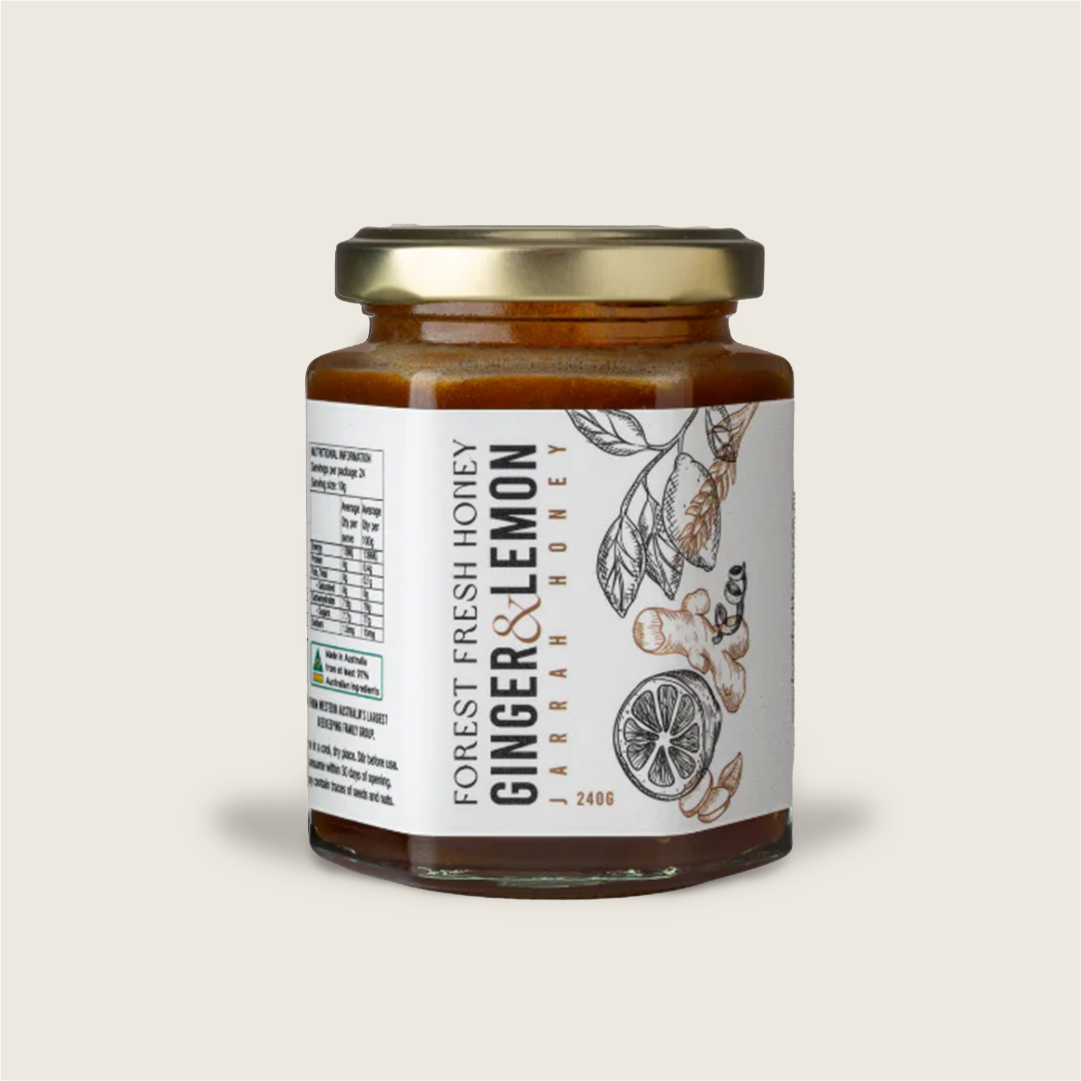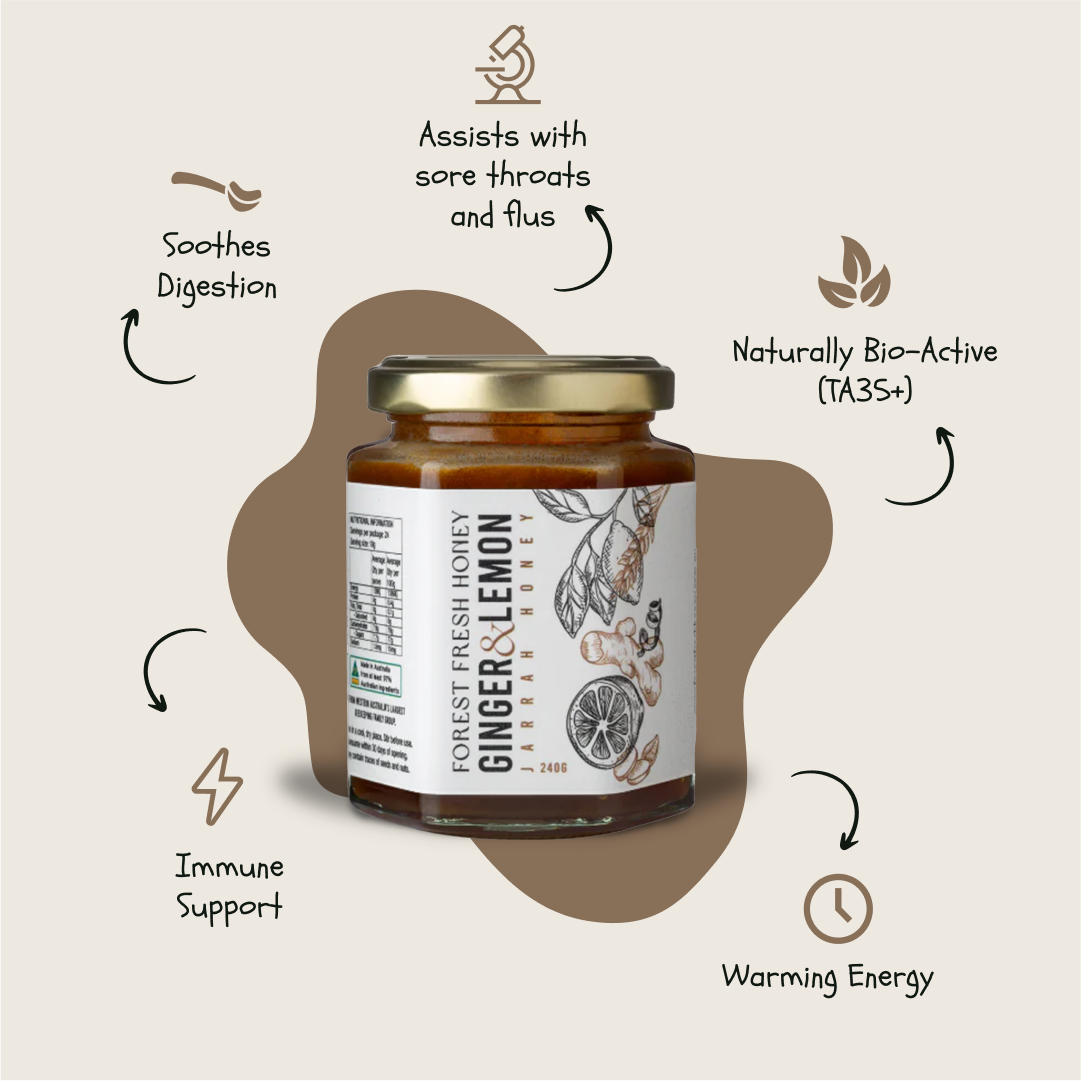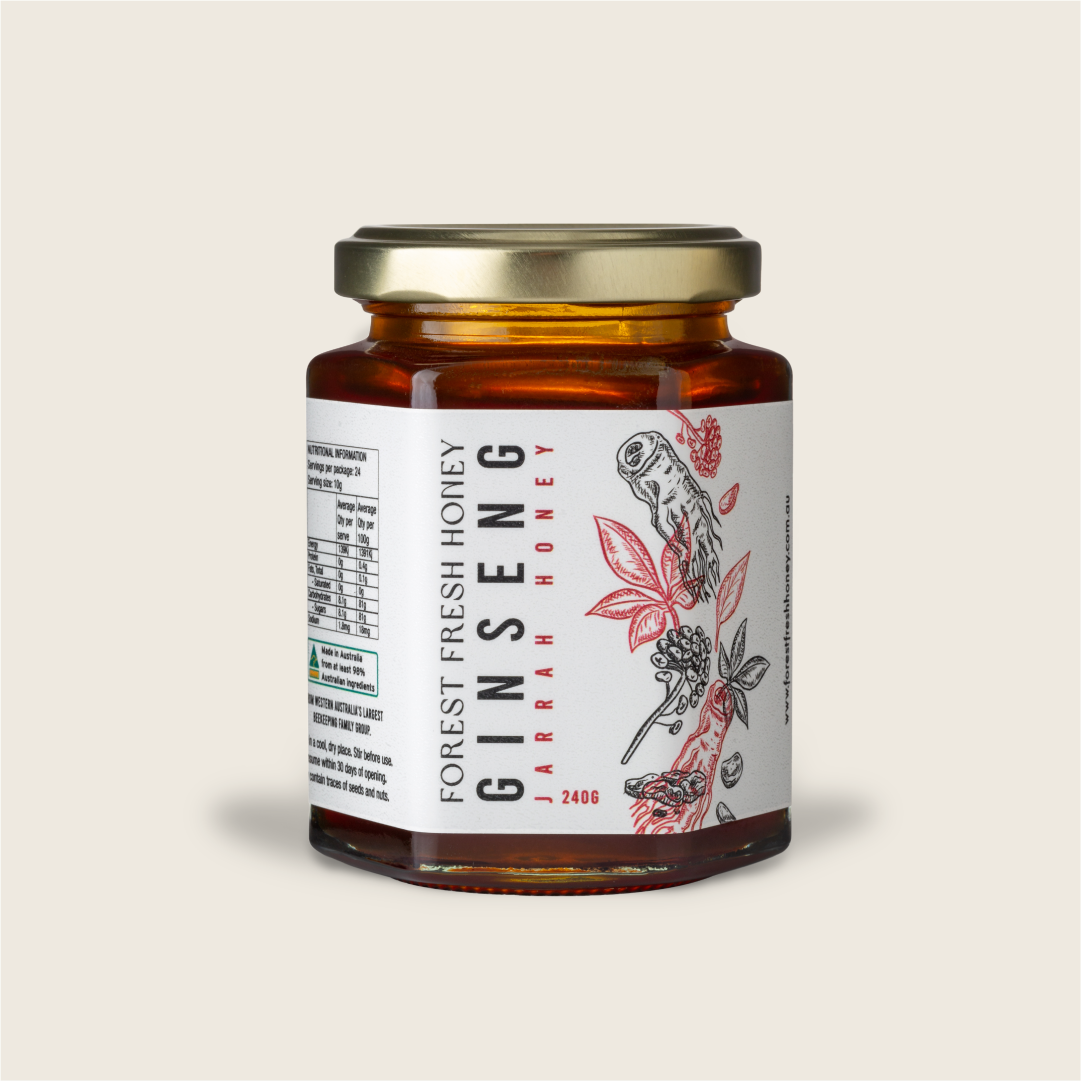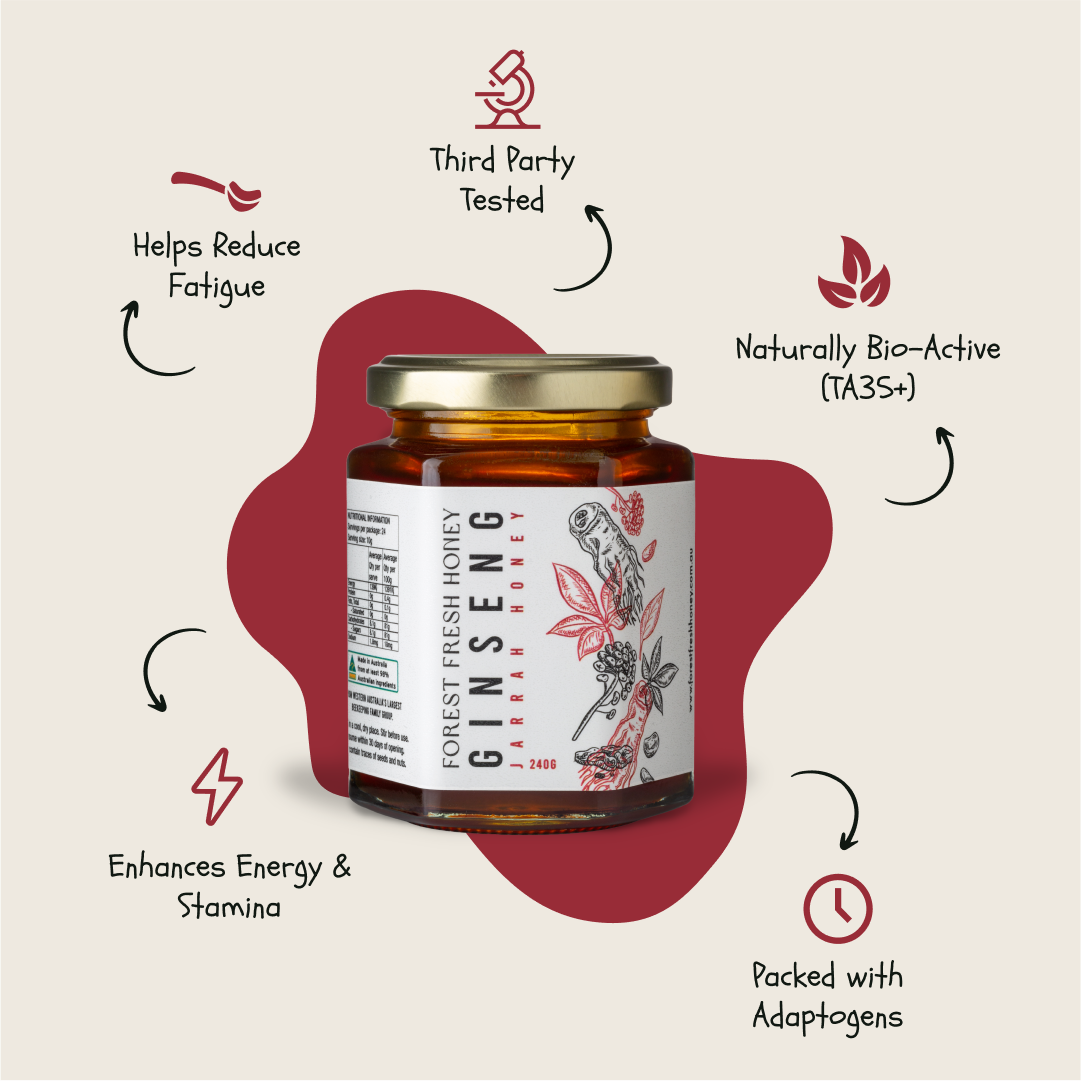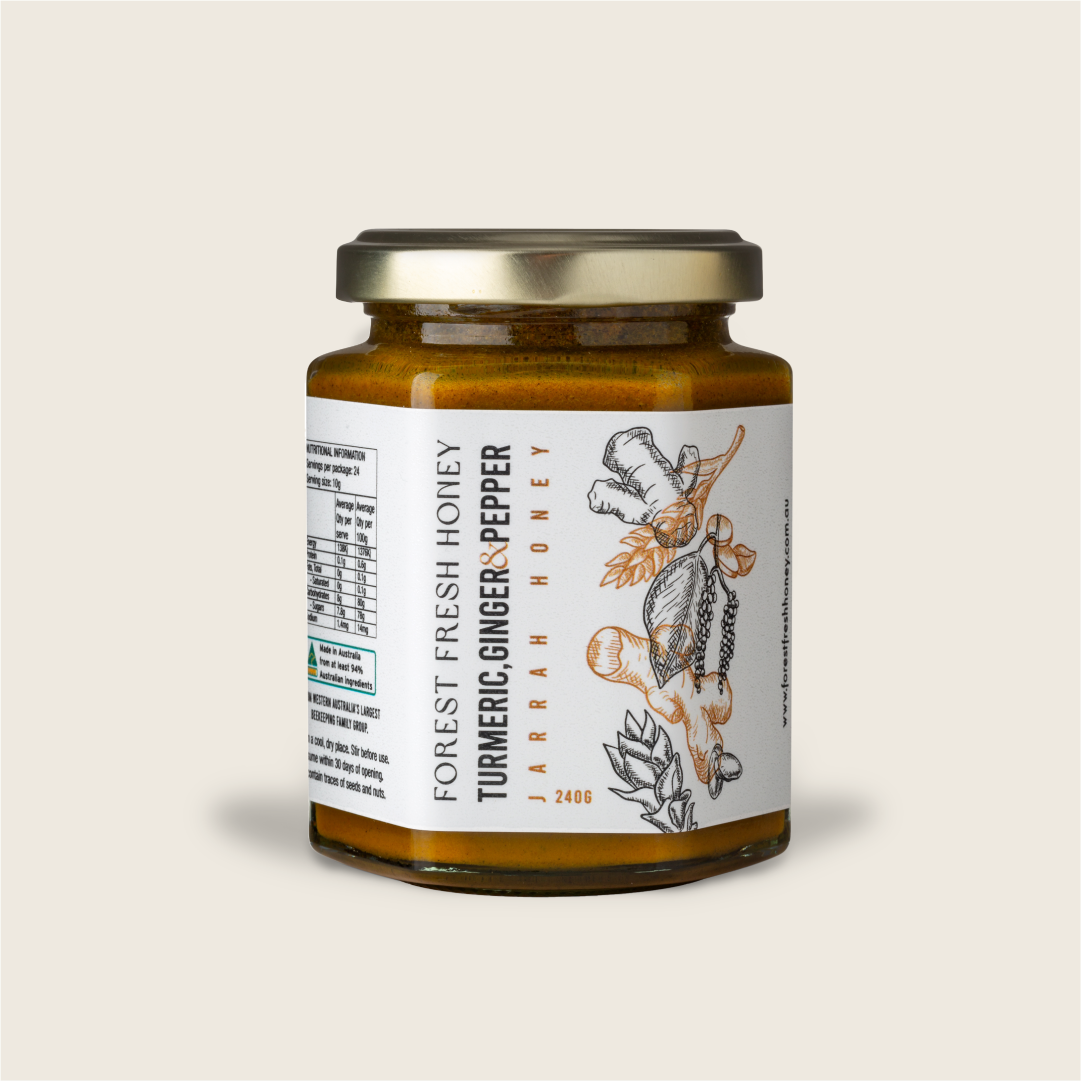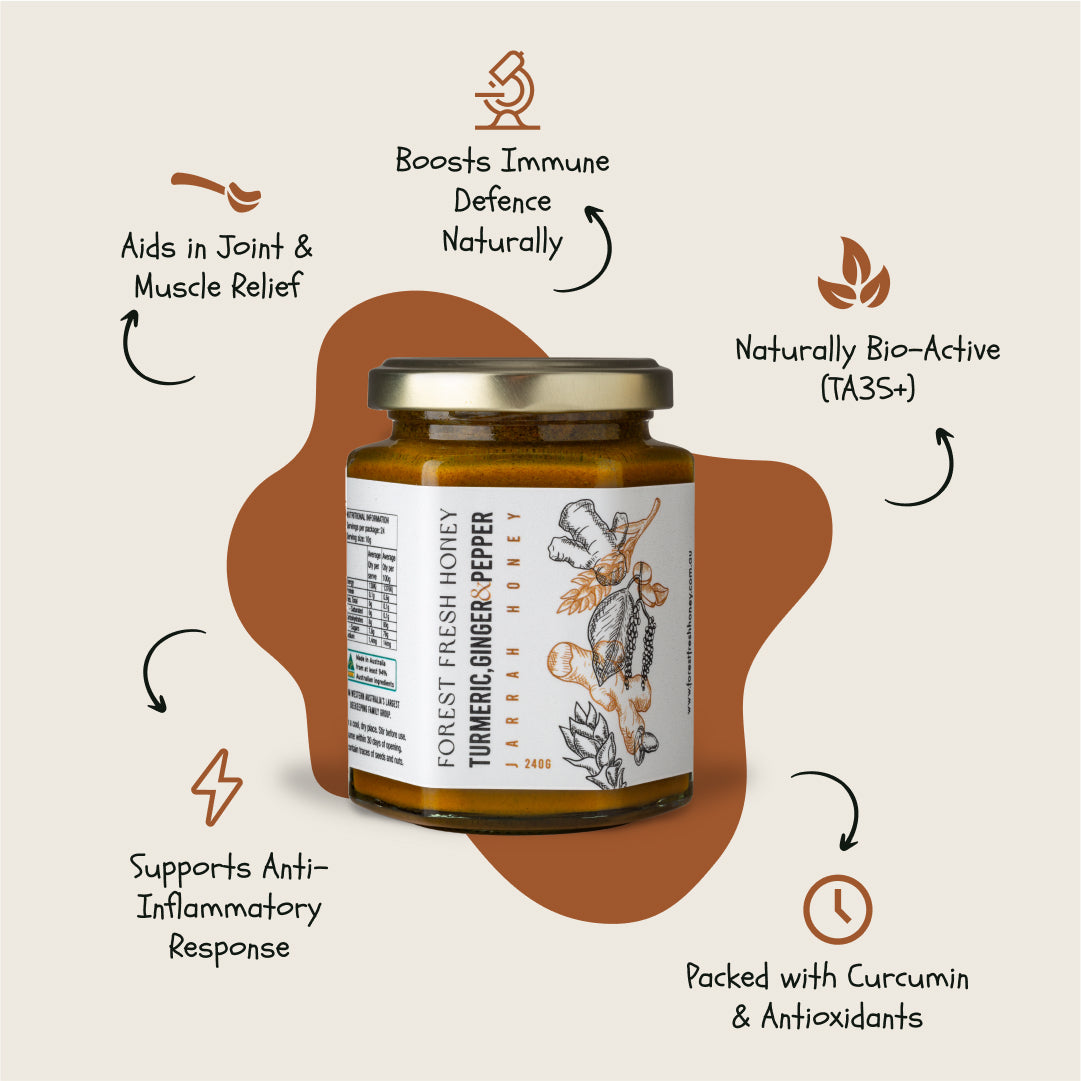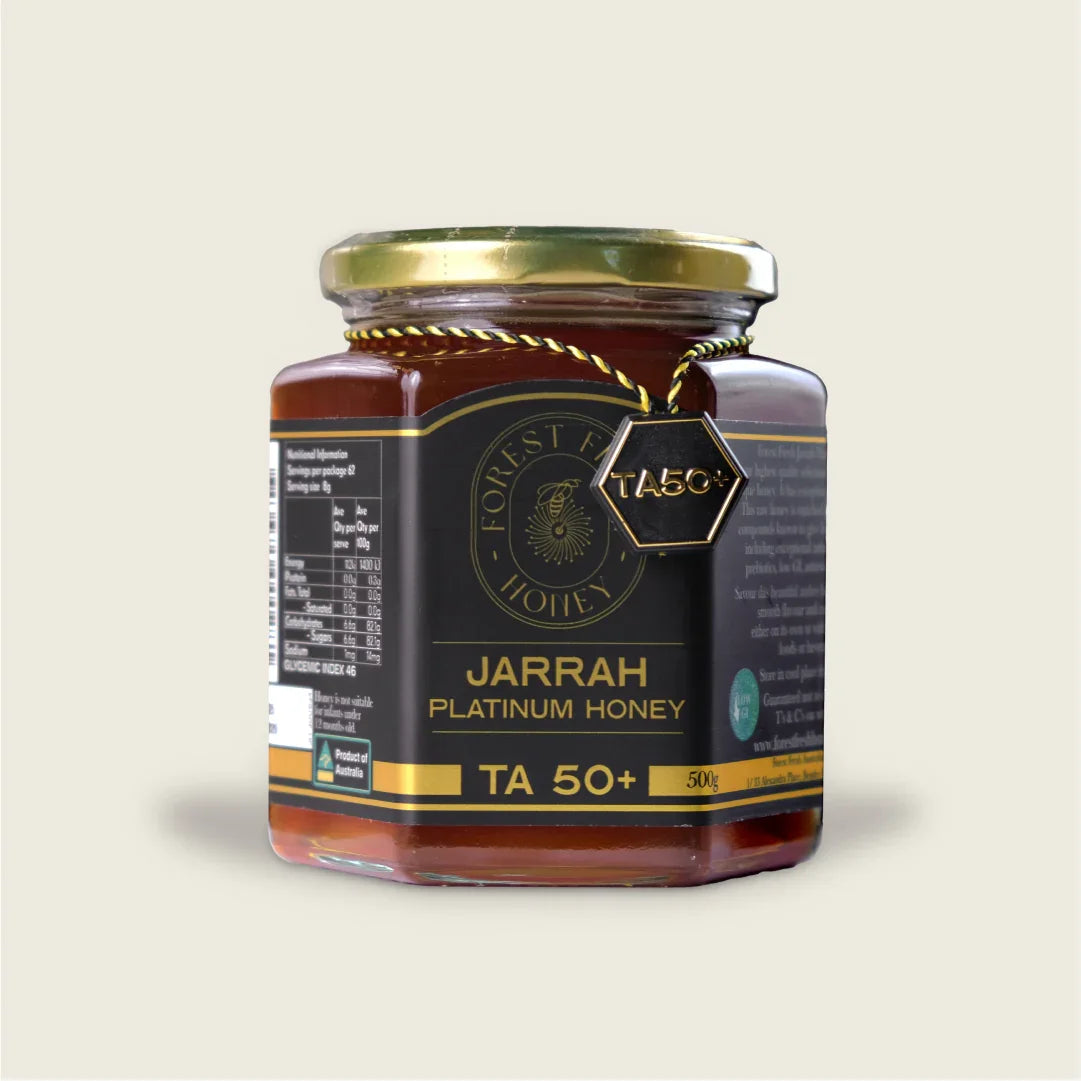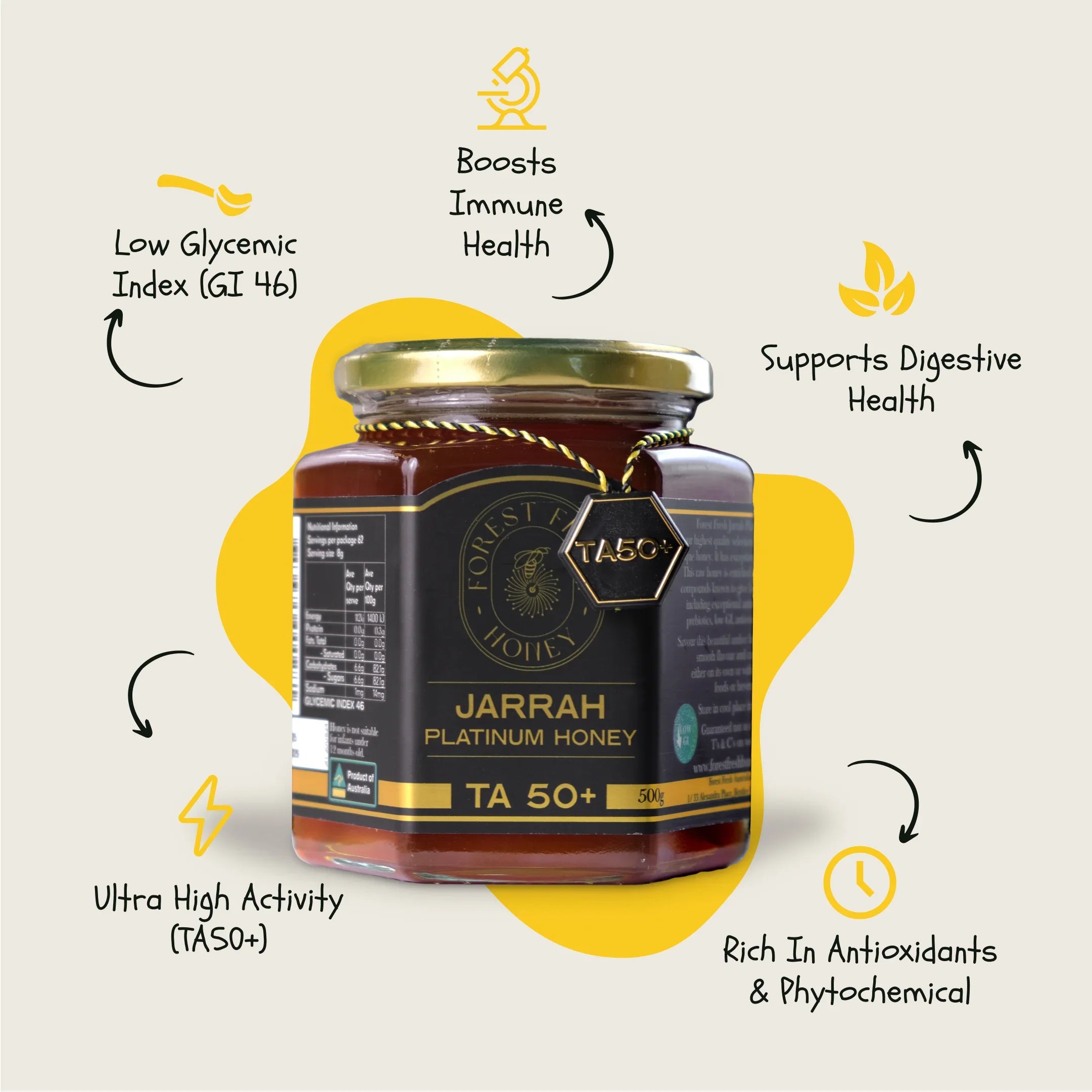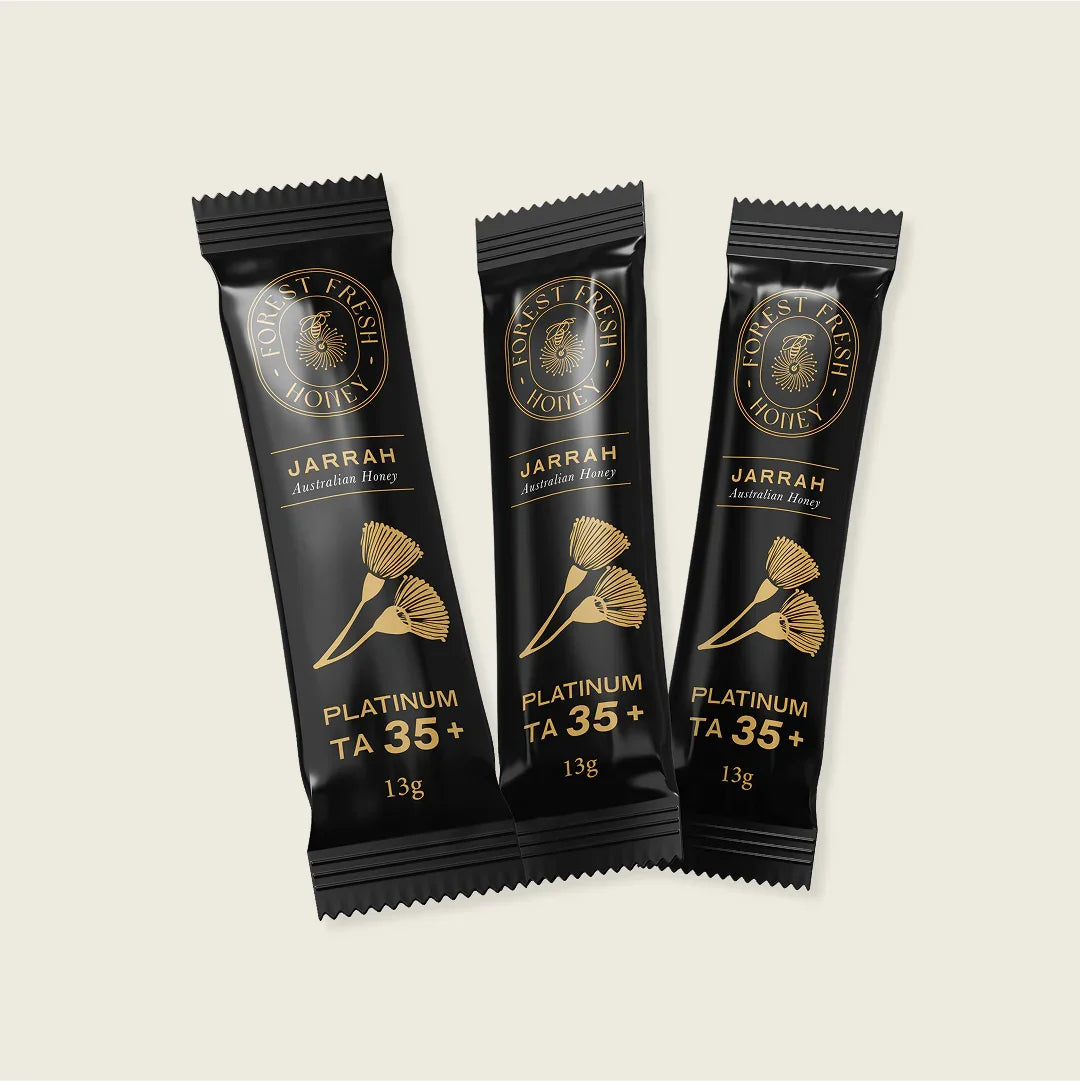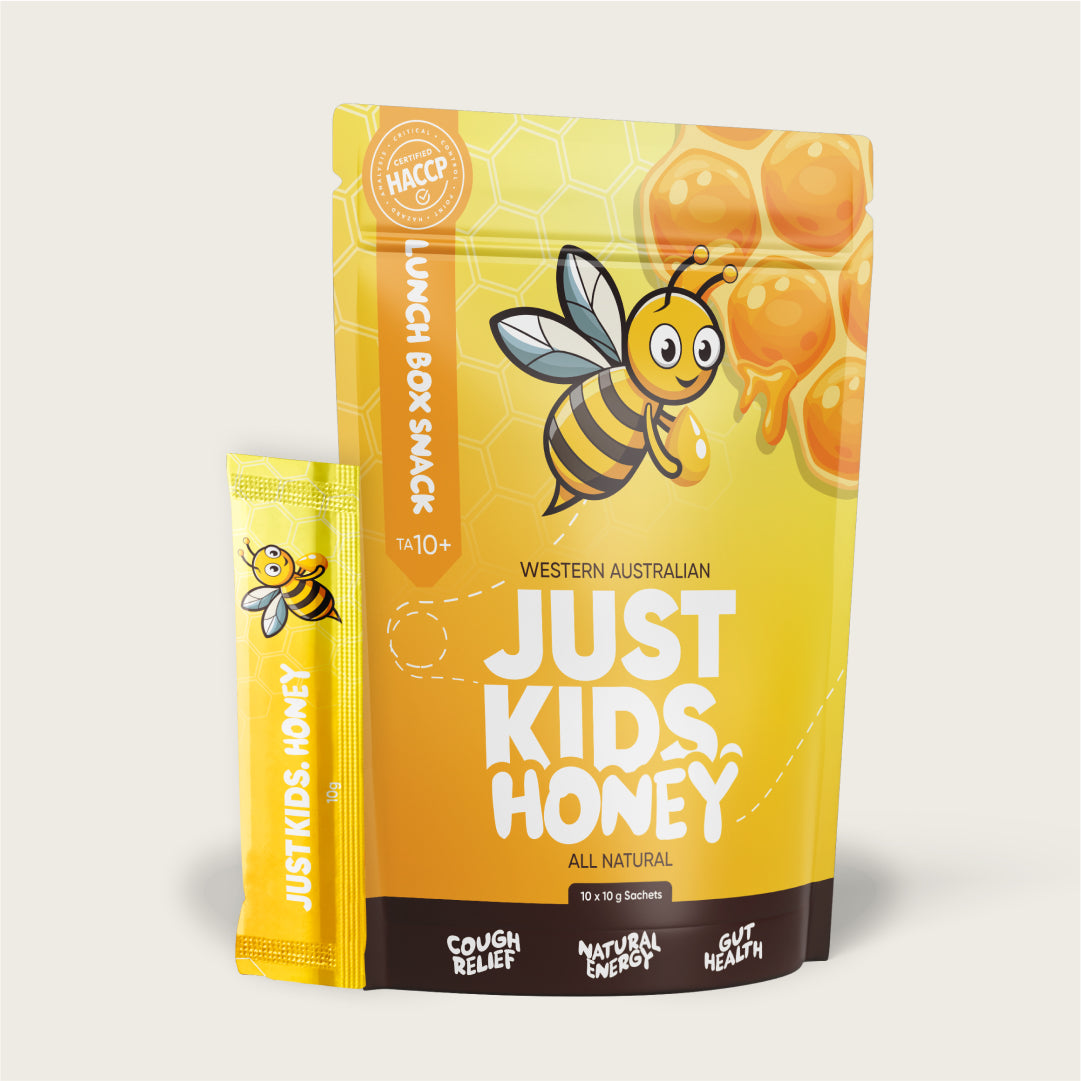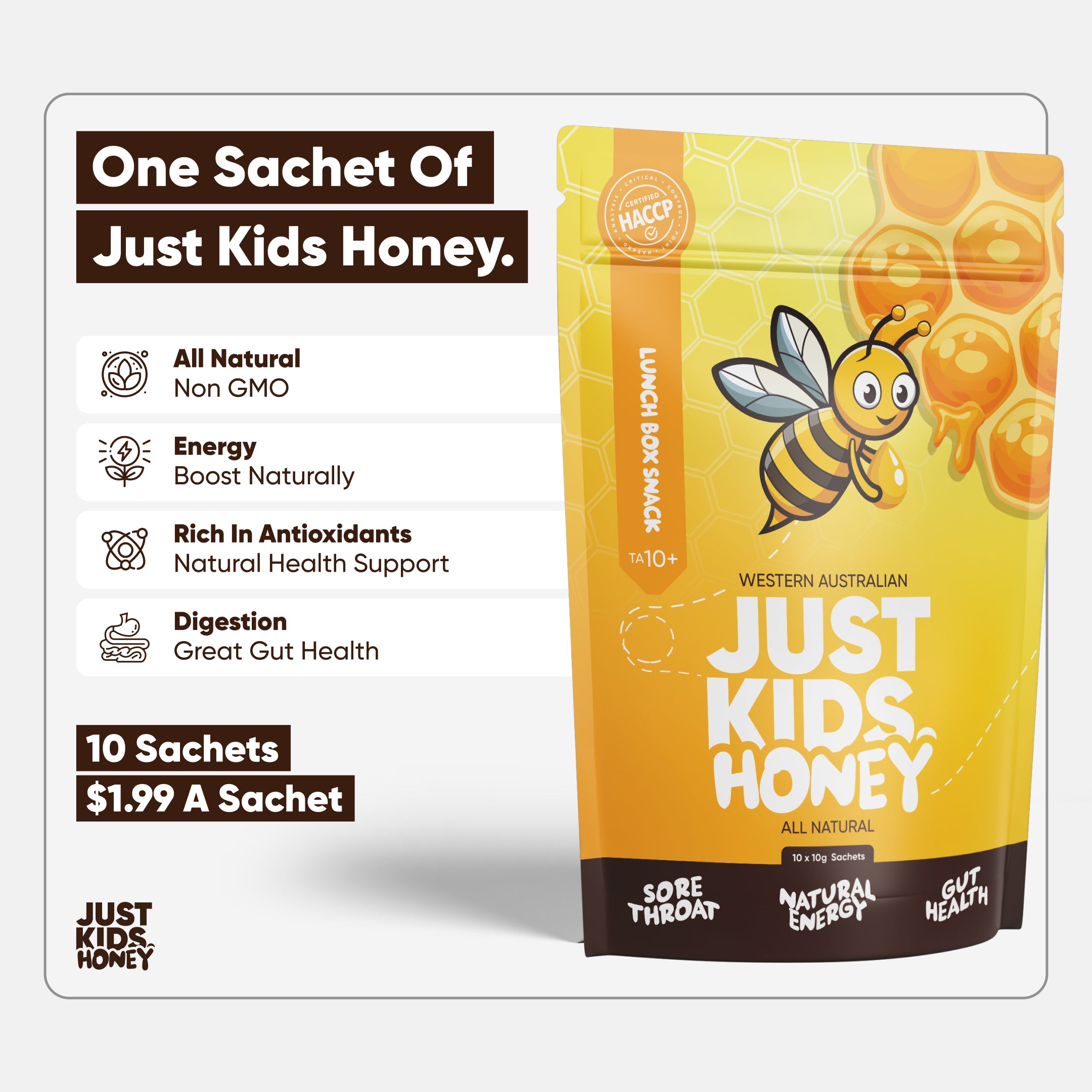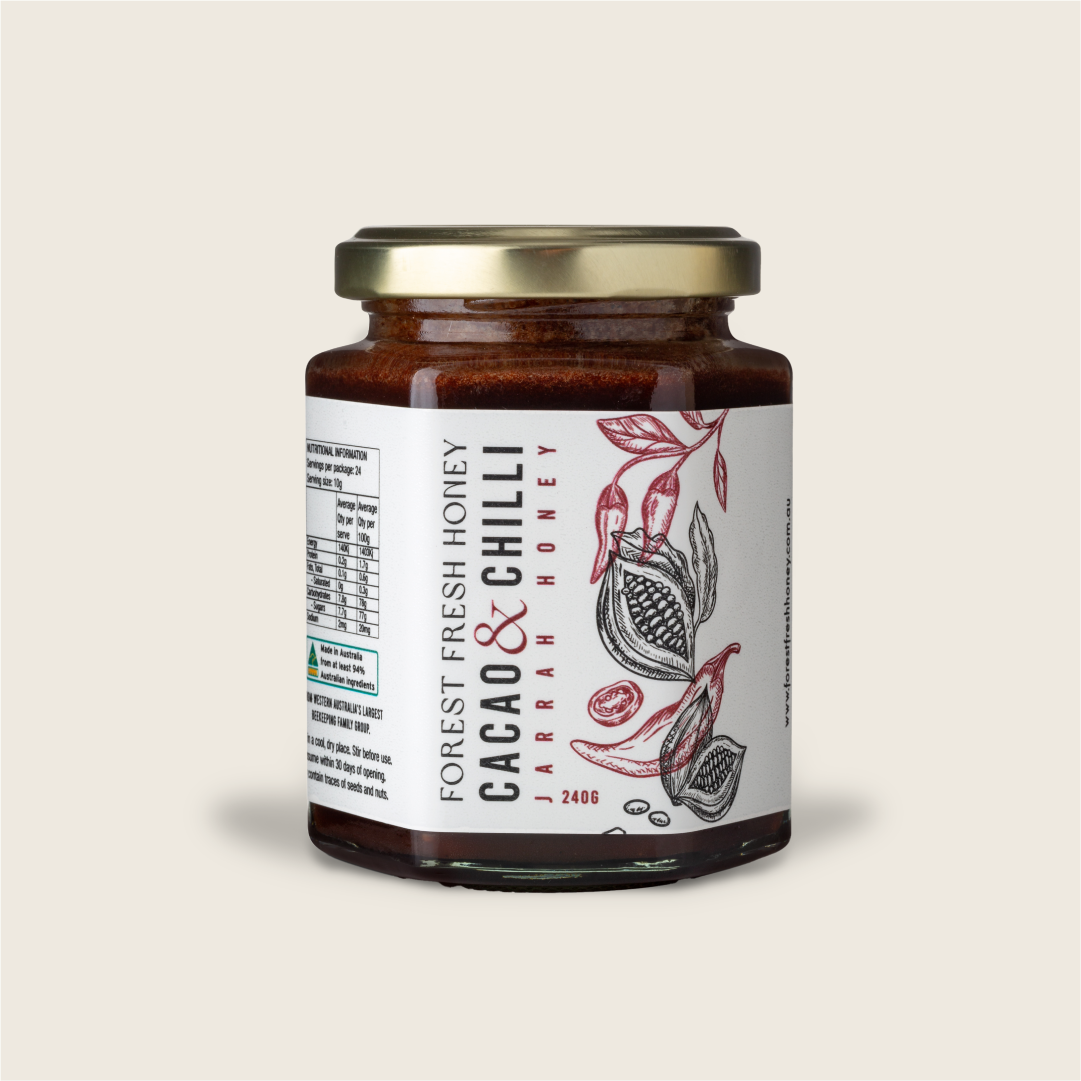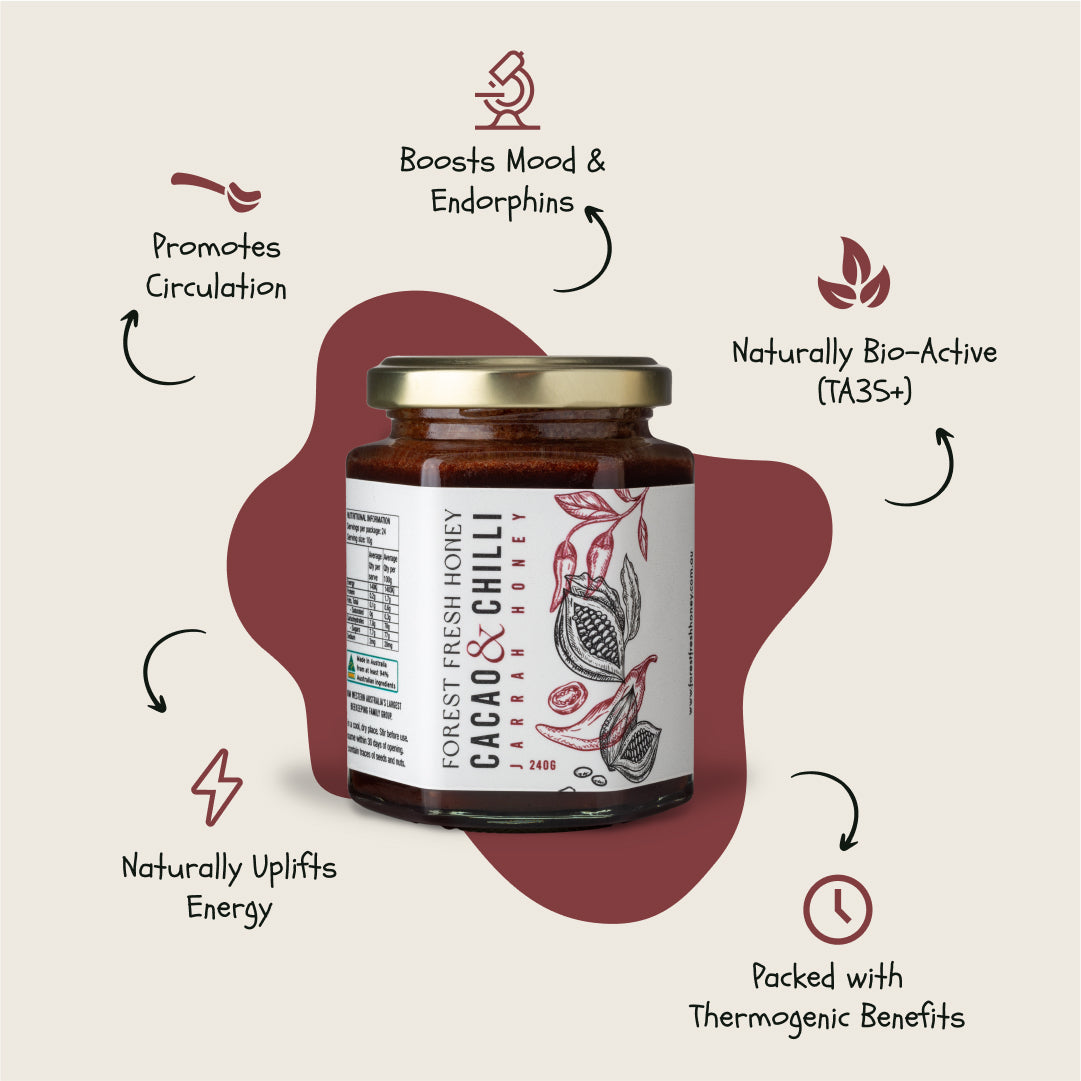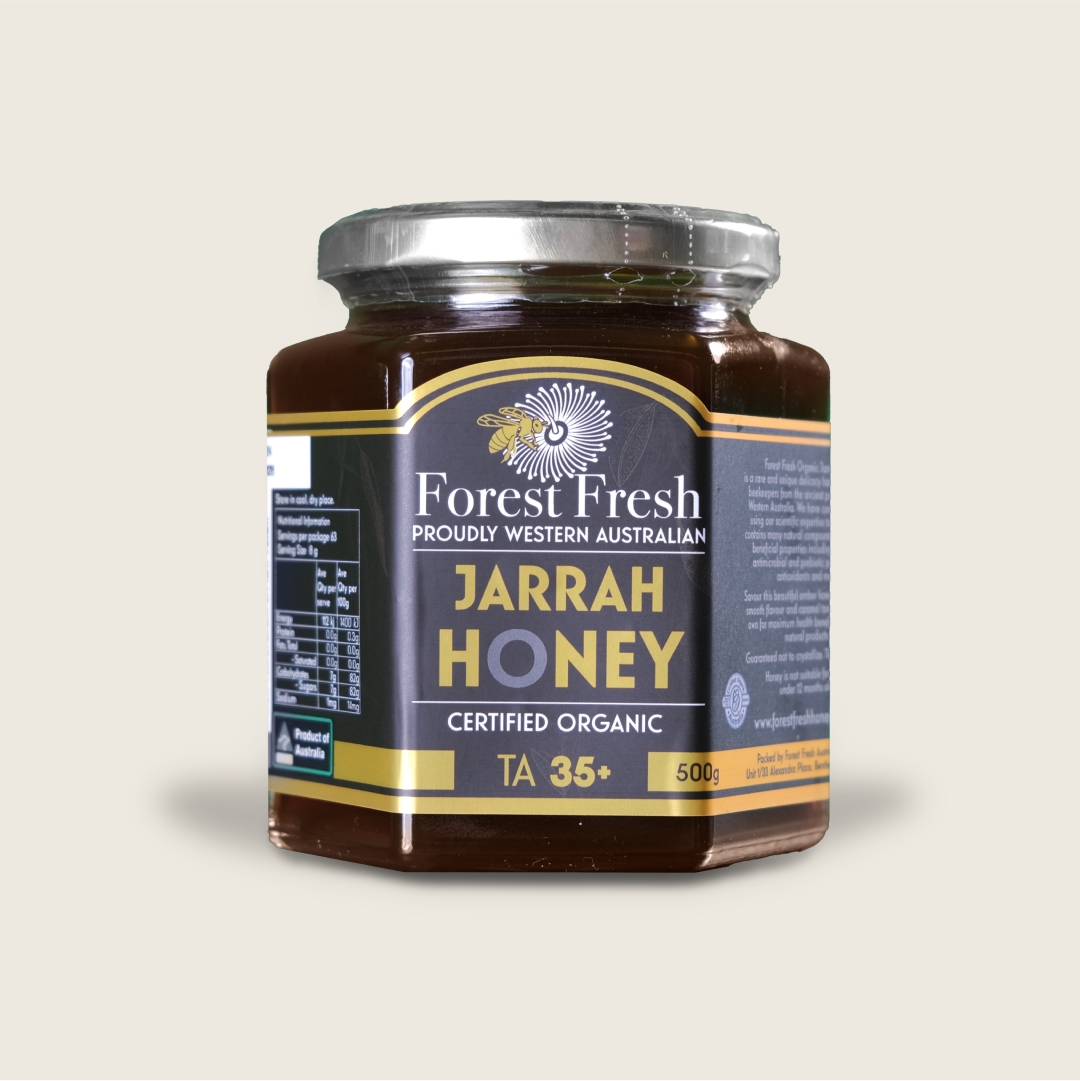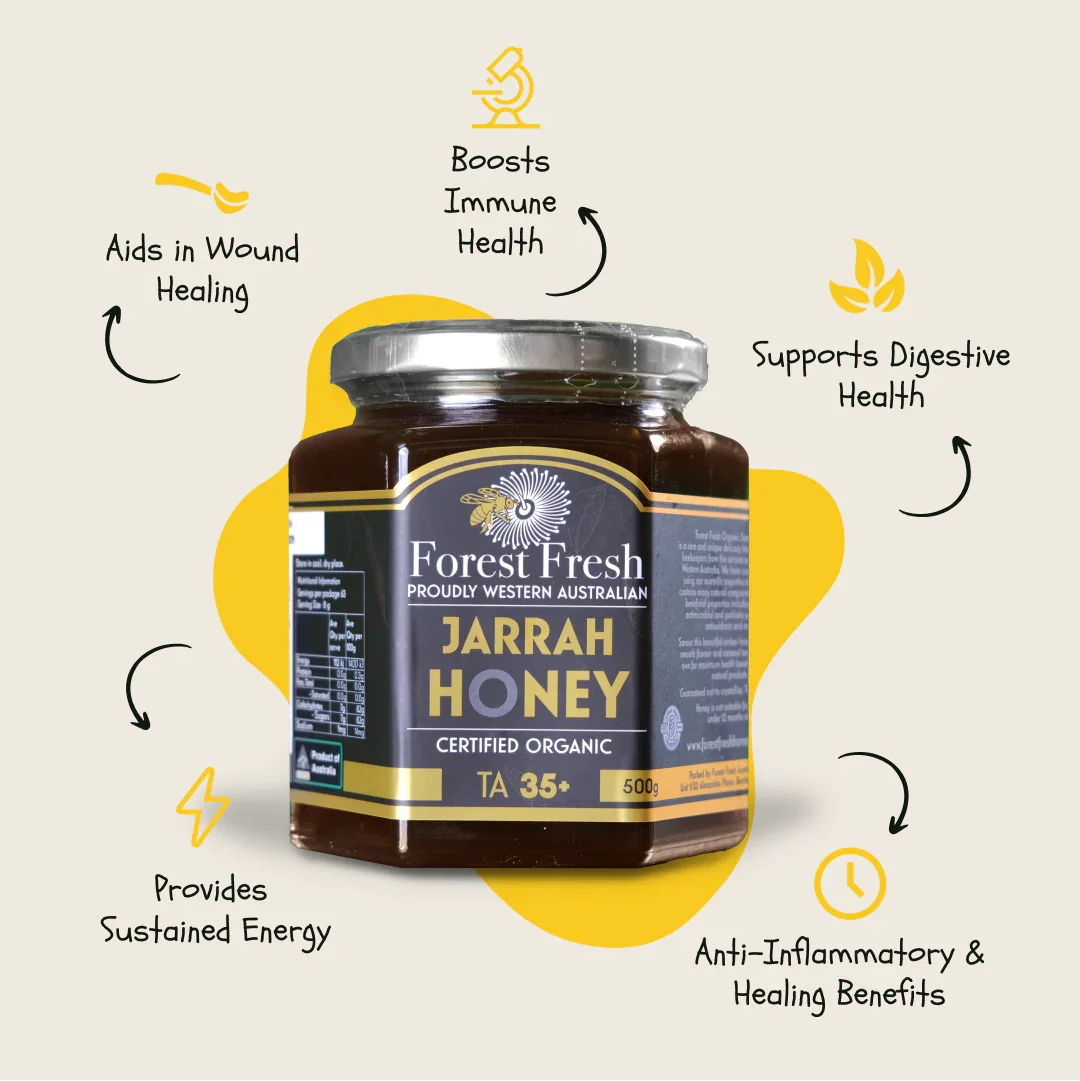FAQs
Can I return my purchase?
Can I return my purchase?
As this is a food product, we cannot accept returns on our honey due to a change of mind. If your product has arrived faulty, however, please take a photo of it and send to contact@forestfreshhoney.com.au and one of the team will be able to assist.
Will my honey spoil?
Will my honey spoil?
Honey stored in a moisture-proof container at room temperature can last for an indefinite period. However, packaged honey must have a best before date, and we recommend consuming the honey before this date.
Most honeys will crystallise if stored for a long time, but his does not affect the quality of the honey.
Crystallisation (locally known as candying) is a natural process where honey converts from a liquid to a semi-solid state. The crystals are of glucose, one to the two major sugars in honey (the other being fructose). The glucose precipitates as small crystals around particles like pollen or wax. The rate at which candying occurs is determined mostly by the fructose to glucose (F/G) ratio; the lower the ratio (more glucose) the faster honey will candy.
A few rare honeys like Jarrah have an F/G ratio high to prevent (or significantly slow) candying. But most raw honey (including Marri and Karri) will candy over time.
What is the Jarrah factor?
What is the Jarrah factor?
Forest Fresh are experts in Jarrah honey. Our selection is based on the Jarrah Factor (JF), a value calculated with a proprietary formula that uses compositional analytical data as inputs. The higher the value, the stronger the unique Jarrah honey properties such as low GI, prebiotic strength, resistance to crystallization and more.
The Jarrah Factor, in conjunction with the assayed Total Activity (TA), tells us what honey is suitable for our Jarrah ranges, including the Jarrah Platinum TA50+ range.
A unique property of good Jarrah honey is a very strong resistance to crystallization. We are so confident that our Jarrah Factor selects only the best Jarrah honey, we offer an industry first Crystallization Free Guarantee*.
If you would like to learn even more about the Jarrah Factor or our selection process, please do not hesitate to get in touch.
*Please see below T&C’s of this offer.
Learn more about Total Activity here
https://www.forestfreshhoney.com.au/pages/activity-honey
Can I give honey to my baby?
Can I give honey to my baby?
It is recommended that babies under 12 months old are not given honey. Some fungal spores can survive in honey, so there is a very small risk of contracting infant botulism. Older children and adults are not affected by the spores as their gut has developed sufficiently to destroy them. It is best to seek the advice of your medical practitioner if you are concerned.
Do you sell imported honey?
Do you sell imported honey?
No, Forest Fresh only sells pure raw Western Australian honey.
What is Jarrah Honey?
What is Jarrah Honey?
Jarrah is one of the rarest bioactive honeys in the world, found only in Western Australia. It’s packed with powerful antibacterial, anti-inflammatory, and antifungal properties. Rich in antioxidants, prebiotics, and low GI, it’s known as Australia’s liquid gold. Jarrah forests are over 1,000 years old, with trees that flower every 2 to 4 years, making each commercial harvest exceptionally rare and unpredictable.
Is your honey organic?
Is your honey organic?
All of our honey is sourced from WA’s pristine native forests and rangelands, far removed from industry and chemicals, so it is pure, raw, and natural. All of our selected beekeepers must have an operation that is capable of Organic Certification, but we do not require that they incur the steep cost of such certification. We purchase based on quality, not certification. We have the expertise to screen the honey we source to ensure that Forest Fresh is only the best quality.
Why is your honey more expensive than most supermarket honey?
Why is your honey more expensive than most supermarket honey?
Many supermarket honeys are not pure, raw and/ or natural Australian honeys. They are often heat treated, or blended. Supermarket honey is often made from a mix of local and imported honey, including from China, where it is made in factory like conditions. The honey may also have been collected in agricultural areas, meaning it may have been contaminated by various chemicals or pesticides.
All of our honey is pure, raw, natural and rare from Western Australia. There are smaller quantities available of the honeys we stock, more precise and complicated processes for extracting in the forests and testing, and much stronger medicinal properties as a result of all of these factors.
Why is honey different in taste, colour and thickness?
Why is honey different in taste, colour and thickness?
The colour and flavour of honey is determined by the blend of sugars, carbohydrates and the many natural substances in the nectar from the floral source. Honey will also darken as it ages.
The thickness of honey is determined mostly by the water content. Our honey is very thick because our dry climate yields a moisture content of only 15-17% . Honey from cold or humid climates contain up to 20% water, and so are much less viscous.
How long will shipping take?
How long will shipping take?
We are a small team so ask for 3 to 5 working days to pack your order, and ship via Australia Post. Please see Australia Posts standard shipping times on the Australia Post website here. Shipping for large orders will take longer. For specific timings, please enquire through this page or by emailing contact@forestfreshhoney.com.au
Who collects the honey, and where from?
Who collects the honey, and where from?
We work with a range of beekeepers in Western Australia. Some are our relatives. We work with multi generation beekeepers as we believe beekeeping is a profession that requires generational participation and expertise to ensure the best hive sites in the forest, bee husbandry and extraction methods.
The honey is collected from native forests and rangelands in the south of Western Australia. We never buy honey collected from urban, agricultural or industrial areas as this honey can contain nasty chemicals or pollution.
Is Jarrah better than Manuka?
Is Jarrah better than Manuka?
Jarrah and Manuka honey are both considered medicinal-grade honeys, but they differ significantly in composition, benefits, and value. Manuka derives its strength from high levels of MGO, a compound responsible for its non-peroxide activity (NPA), and is graded using UMF™ or MGO values. In contrast, Jarrah honey contains both NPA and a much stronger peroxide-based activity (PA), measured as Total Activity (TA). Jarrah honey exceeds Manuka when analytically screened, with TA50+ equivalent to MGO 4000+, Beyond antimicrobial power, Jarrah also delivers:
- low glycemic index
- high prebiotic content
- strong antioxidant and anti-inflammatory properties
How should I use my honey?
How should I use my honey?
As our honey is bioactive honey, it is best to have it as natural and raw as possible to maintain all the health benefits and properties. We suggest eating it off the spoon, drizzled over cereal, fruit or natural yoghurt, in marinades, smoothies, raw desserts and dressings or as a sweetener in drinks. Jarrah honey can also be used to soothe the symptoms of a sore throat, before and after endurance activities, and for the skin.
You can find inspiration for recipes on our blog here.
*Please consult with your Physician before taking any new ingredients that may affect you.
What’s your Crystallisation-Free Guarantee™?
What’s your Crystallisation-Free Guarantee™?
We guarantee that our Jarrah Honey TA35+ and above will remain crystallisation free until the best before date, an industry first guarantee to ensure our customers that every jar of Forest Fresh Jarrah is pure authentic Jarrah.
Why?
Jarrah honey’s unique natural composition, paired with our advanced screening process, allows us to offer this world-first guarantee.
Terms:
- Applies to TA30+ Jarrah Honey
- Jar must be unopened
- Must be stored in a cool, dark place
- Valid until the Best Before date on the jar
If it crystallises under these conditions — we’ll replace it.
What makes Western Australia great for honey production?
What makes Western Australia great for honey production?
There are a few key reasons why Western Australia is superior in honey production.
- Superior Terroir: Unique combination of highly evolved trees growing in pristine native forests and very harsh soils and climate. Forest Fresh accredited beekeepers have access to quality forest sites, which are important for premium honey production.
- Healthy, strong, productive bees suited to local conditions: over 20 years of selective breeding of apis mellifera on Rottnest Island.
- No chemicals used to maintain hive health, or agricultural crops or silvicultural forests visited.
- An absolute commitment to sustainable honey production.
Who is Forest Fresh and are they an Australian company?
Who is Forest Fresh and are they an Australian company?
Forest Fresh is proudly Western Australian, family-owned, and run with five generations of beekeeping, packing and exporting knowledge. We combine 100+ years of local apiary knowledge with deep scientific and e-commerce expertise to bring pure, raw, and bioactive honey directly to your door.
Does extracting the honey harm the bees
Does extracting the honey harm the bees
No. Here in Western Australia, we use a species of bee that loves to make honey, and our native flora provides much more nectar than the bees need for the small amount of honey they want to store over winter or to feed growing juveniles. We harvest honey during spring and summer when there is an abundant supply, so it does not cause them any harm at all.
WA beekeepers also typically move their bees in winter to the coastal woodlands where trees like Banksia continue to produce nectar throughout the colder months. The bees forage this nectar and pollen during the warmer days when they can leave the hive, providing them with an additional source of food.
Do you ship within Australia and internationally?
Do you ship within Australia and internationally?
Yes! We offer free shipping Australia-wide on orders over $120. Orders are dispatched in 1-2 business days, with standard delivery in 3–7 days and express delivery 1-3 days. International shipping is available at checkout, rates and times vary by location.
Can I collect my order in person?
Can I collect my order in person?
Yes, you can opt in to collect your order from our fulfilment centre in Bentley, Perth. Select this as an option when checking out online, and you will be notified when your order is ready for collection.
Do you export/wholesale internationally?
Do you export/wholesale internationally?
Absolutely. Our Honey X division supplies premium WA honey to retailers, distributors, private label clients and health brands across the UAE, China, Japan, Malaysia, and more. Please visit www.honey-x.au for details.
What to do if honey Crystallizes?
What to do if honey Crystallizes?
If you want to return it to a liquid, you just need to re-dissolve the glucose crystals. The best way is to put the jar of honey into a container of warm water (no more than 45°C) and heat and stir gently till the crystals melt. The honey will start to melt when it reaches about 35°C. But be careful not to heat above 45°C, as many of the beneficial enzymes and other constituents in raw honey will begin to degrade at higher temperatures.
If you are in a hurry, you can use a microwave. Microwave the open jar of honey in 10 second bursts, stirring between each burst. But be very careful as the honey will heat up very quickly.
We recommend trying some of the candied honey before you melt it. Varieties like Karri are very nice in candied form.
How can I get free shipping?
How can I get free shipping?
If your order is over $120 standard postage within Australia is free. This will be automatically applied at checkout.
What is Total Activity (TA)?
What is Total Activity (TA)?
Total Activity (TA) is the bacterial and fungal killing scale of honey. The bigger the value, the more bacteria (and fungus) the honey can potentially kill. Values above TA10 deliver beneficial properties, while values of, or above TA30+ are exceptional and have great health benefits. It is often compared to the MGO rating of Manuka honey.
Jarrah honey with TA35+ if comparable to Manuka honey with MGO 2000+.
For more information on this, please see this page here.
https://www.forestfreshhoney.com.au/pages/activity-honey
Is your honey pasteurised or ultra-filtered?
Is your honey pasteurised or ultra-filtered?
No, our honey is not pasteurised or ultra-filtered. Honey can’t be described as “Raw” if it has been pasteurised.
Pasteurising honey to kill microbes involves heating to 60 or 70℃, then rapid cooling. Any honey imported into Western Australia must be pasteurised to prevent introduction of the nasty diseases that are not present in the state, which is why you should, where possible, purchase Western Australian honey.
Ultra-filtration is a high-tech procedure where honey is heated, sometimes watered down and then forced at high pressure through extremely small filters to remove all the natural fine particles in honey (pollen, wax and propolis). The purpose is to either conceal the origin of the honey (by removing the pollen) or to impede the crystallization process that happens naturally in most honeys.
What is Raw Honey?
What is Raw Honey?
Raw honey has almost the same composition as honey in a beehive. Raw honey is not heat treated (pasteurised) or ultra-filtered. Heating and filtering honey remove all of the beneficial natural substances plus changes the chemistry of some of the sugars.
Extracting honey from the comb does remove some volatile aromatic compounds, so it you want to know the true taste of honey, try some honeycomb.
I want to purchase wholesale, is that possible?
I want to purchase wholesale, is that possible?
Yes, we offer wholesale Forest Fresh and OEM orders. Please enquire through our wholesale page on this website, or by emailing us at contact@forestfreshhoney.com.au
Is honey a Probiotic or Prebiotic?
Is honey a Probiotic or Prebiotic?
Western Australian honeys are a great source of prebiotics. They contain oligosaccharides and other complex carbohydrates which the good bacteria utilise to make nutrients that are beneficial for good gut health.
Jarrah honey is a very good prebiotic as it promotes production of higher concentrations of Butyric Acid (BTA) compared to other honey varieties. BTA is a saturated, short-chain fatty acid which has powerful anti-inflammatory effects. Consumption of foods with a high concentration of BTA is linked to a lowered risk of colon cancer.
